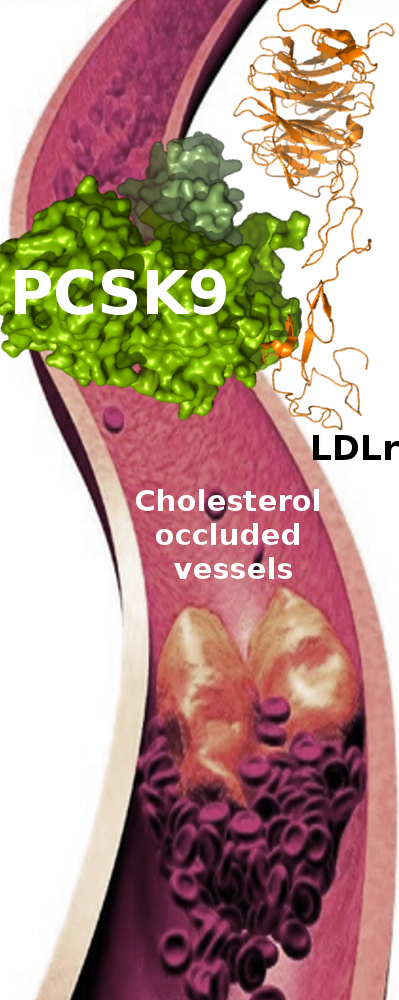
The desease
Impact on the population
Available
cure
PCSK9
Project Aim
Results follow-up
Hypercholesterolemia is a pathological status related to high cholesterol (Ch) level associated to high-mortality rate complications, which must be monitored especially in the case of high-risk patients, whose number is increasing year–by-year due to population aging.
It is estimated that high-Ch level deseas cause 2.6 million deaths (4.5% of total) and 29.7 million of Disability Adjusted Life Years.
Today, available drugs to treat hypercholesterolemia include statins and antibodies. However, statins show side effects such as diabetes, myopathy, serious kidney problems, and are not recommended during pregnancy, whilst antibodies require parenteral administration.
PCSK9 protein is a convertase whose level is directly related to cholesterol concentration in the blood and forms protein-protein complexes that are considered potential anti-hypercholesterolemia drug targets. Till now, structure-based rational drug-design campaigns have relied only on poor structural information available for such complexes.
This project aims to provide such structural information by combining X-ray based techniques, molecular dynamics and state-of-art deep learning protein-modelling techniques. Particularly, it will be investigated the promising interaction between PCSK9 and LDLr, as well as between PCSK9 and selected proteins involved in its secretion, maturation, and degradation. Selected and already known loss- and gain-of-function PCSK9 variants will be investigated to assess the effect of the carried mutations on protein folding, as well as on the ability of the convertase to form protein-protein complexes associated to cholesterol homeostasis. In silico methods will be exploited to identify conserved residues involved in mutations and potentially related to hypercholesterolemia. Structural information on PCSK9-involving complexes will be exploited to outlines the topology of the molecular contacts, as well as the presence of candidate binding pockets to be screened by virtual screening techniques against drug libraries.
The structural information provided by the proposed project will pave the way for a deeper understanding of the molecular entities involved in the Ch homeostasis and, thus, in the pathologies related to Ch dysregulation. Such new knowledge could help health care providers that tackle Ch-related diseases in selecting more effective strategies and technologies, thus resulting in a significant impact on the healthcare system.
